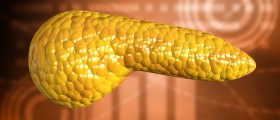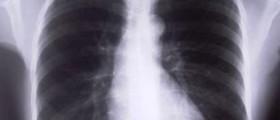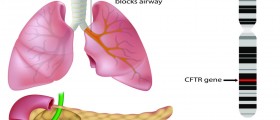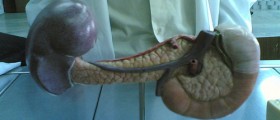
The pancreas is located in the upper part of the abdomen, behind the stomach, being a crucial organ in our body, responsible for proper digestion. Basically, the pancreas is a gland which produces digestive juices and hormones involved in digestion as well.
Products of the Pancreas
As far as digestive juices are concerned, our pancreas produces enzymes and bicarbonate which are delivered to the small intestine through tiny connective ducts. Once these enzymes enter the small intestine, they get involved in various processes which manifest through breaking down proteins and fats of the consumed food, allowing nutrients to be absorbed by the body.
Digestive hormones, on the other hand, being insulin and glucagon, get released into the bloodstream. Their main purpose is to balance the sugar levels in the organism. Lack of proper function of these hormones may lead to diabetes symptoms since body's sugar levels, being the main source of its energy, need to be regulated properly.
When the pancreas becomes inflamed due to various causes, this state of affairs triggers swelling of the gland and the blood vessels located around it. Subsequently, bleeding, infections and gland damage may take place, trapping the digestive juices inside the pancreas itself, leading to initiation of digestion within the organ. If this malfunction is neglected, severe damage can be caused to the gland.
Facts about Pancreatitis
The inflammation of the pancreas can be either chronic or acute. Both of these occurrences may jeopardize one's health severely, even possibly leading to death. Acute pancreatitis is a short-term condition while chronic pancreatitis is an ongoing, long-term problem. Acute pancreatic attacks are very painful. However, these attacks usually go away quickly, allowing the pancreas to recuperate.
Symptoms of Pancreatitis
Speaking of acute pancreatitis, pain is the most common symptom of this condition. This pain may appear suddenly and be very severe, or gradually increase in intensity. The pain usually stems from the upper middle or left side of the abdomen, spreading from the front of the body to the back. Eating and lying on the back make this pain worse. Overall, the pain lasts for several days after which it subsides.
Alternatively, nausea, fever, chills, swelling in the abdominal area, tenderness to touch, increased heartbeats and many other additional side-effects of pancreatitis may appear.
In case of infections or internal bleeding, dehydration may take place, along with low blood pressure and weakness, tiredness, dizziness, lethargy, nervousness, confusion, concentration difficulties and headaches. Once the blood pressure becomes too low for the blood to reach the pancreas, a condition known as shock takes place, being very dangerous.
Finally, chronic pancreatitis may manifest through diabetes, weight loss and appetite problems, bleeding and liver complications.

















Your thoughts on this
Loading...